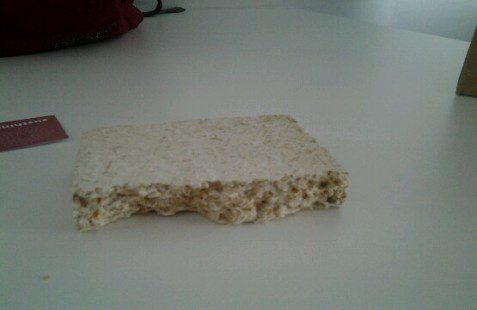I was completely right to be excited about this workshop. It lived up to my expectations. We were packed into a room but Professor Peter Hopkinson gave fascinating and easy to understand lecture on the circular economy telling us it’s:
An economy that is restorative by intent.
Like myself most of us were completely new to the concept. We were from a diverse range of backgrounds and subject areas; home students, international students, business and humanities students.
One striking thing about the circular economy is its simplicity. There are four key principles:
1. There are two sorts of materials: biological and technical; everything we use in our lives is made by either
2. The economy has to run on renewables.
3. Celebrate diversity
4. There is no waste in a circular economy. All “waste” equals food. Professor Hopkinson illustrated that for us in a brilliant way. If once the apples in a tree are ripe and fall on the ground are they waste? The answer of the linear economy would be yes, but in a circular world the fallen apple is food that will be consumed.
How do we develop the circular economy?
The first step is to design a product, then to develop the business model which would be suitable for it, and last but not least to get the product back for redistribution or reversing logistics.
In the workshop we focused on design: in groups of two or three people we looked at a variety of products (from fabric detergents and old phones to mushroom packaging) and were tasked with designing a circular solution for them. It is amazing to see so many people who have never met before be passionate for the same idea, an idea which is actually innovative and could have an impact on a global economic scale.
Getting inspiration from all kinds of people and observing the process of brainstorming and the enlightened faces of people who have just thought of something amazing, was magical. We were all fully absorbed which proves to me the importance of the circular economy.
Project ARA
One of the products which might become a part of the circular economy is the Microsoft designed Project ARA which consists of a body to which removable and interchangeable parts are added.
Mushroom packaging
Mushroom packaging is an almost completely biological material which can replace completely polyethylene. This type of packaging is already used on a large scale by companies such as Dell for shipping their products, mostly due to customer pressure. An interesting thing about it is that mushroom packaging is actually cheaper, quicker to produce and easy to dispose of.
Splosh
This is a cleaning product which is specifically designed for re-use. It contains only the active ingredients needed for cleaning which can be dissolved into water and refilled by requesting the refill itself online.
I enjoyed learning about these products which are in use now. Why didn’t I know about them before today?




